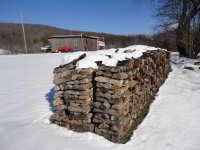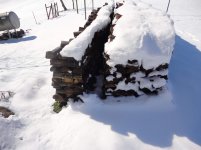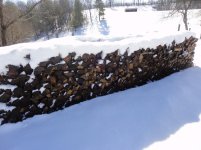DieselnHooters
Platinum Member
Most plentiful would be maple, ash, and black cherry. Depending on location white/black/yellow birch, ironwood, and beechnut are also common. Hardly any oak in my immediate vicinity but not that far away there's plenty of it. Always interesting to see where the different species take hold. In the fall when the leaves change is as good time to spot the different concentrations of trees as each has it's own color characteristics.
Hard or "Sugar" Maple is among my favorites but the softer maples such as silver, red, swamp etc. are fine by me. I heat primarily with wood and like a variety of types and sizes. Smaller pieces of ash & black cherry for example to get a fire going and larger chunks of hard maple, or beech for those overnight burns. But like others here report, nothing goes to waste and from time to time I'll burn wood that some around here avoid such as poplar, willow, or elm.
I am a 50 miles from the NY border, mostly red maple on my land, it is really good burning wood when it grows in dry spots. Most will tap it like sugar maple.


